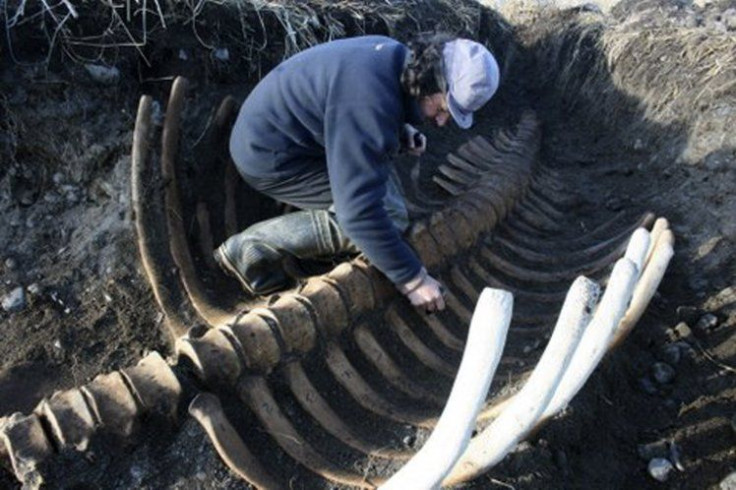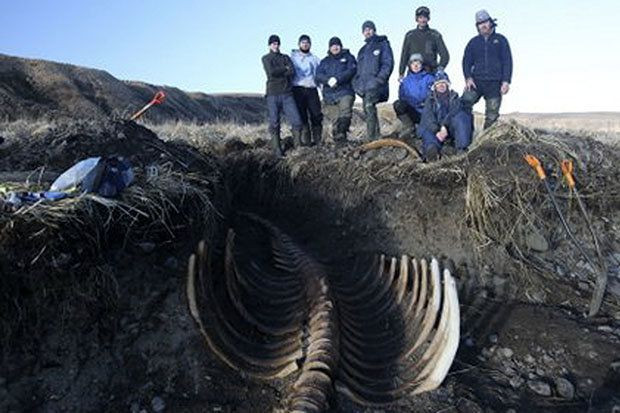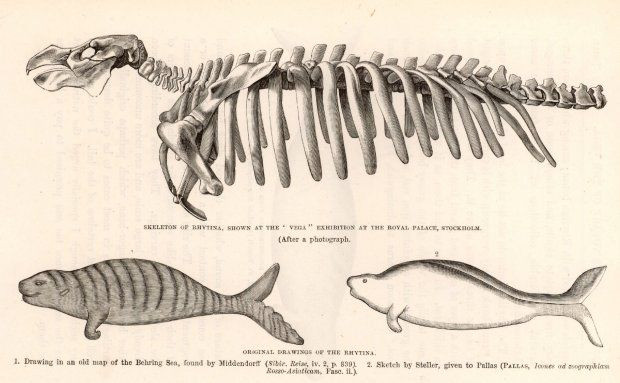Extinct Stellar's Sea Cow Fossil Found In Kamchatka Region In Russia

A team of Russian researchers found the remains of a gargantuan sea mammal that is now extinct. The team was excavating a site near the country’s eastern coastline in a remote region in the Komandorsky Nature Reserve in Kamchatka, Russia.
The Natural Resources Ministry of Russia released a statement Friday stating that the bones were in excellent condition and were intact. This species known as the Steller’s sea cow died out in the 18th century.
The release said that the discovery was made near the Commander Islands in the Bering Sea. A study of the bones showed that the specimen was six meters in length. The research paper, released in journal Biology Letters, said the remain of the giant beast wee very well preserved. The team counted 45 vertebrae, 27 ribs, a left scapula and other bones that were preserved very well by the beach sand it was buried in . It was estimated to weigh about 10 tonnes.

The Ministry of Natural Resources and Ecology said in the statement that the investigators spent around four hours digging a few couples of feet and found the massive sea monster. The local officials first thought the ribs were a ‘fence’ coming out from the sand placed to guide people to the beach.
This species of sea cow were alive since the Pleistocene age which was around 2.6 million years ago. This creature was an excellent swimmer and its mammoth size made sure it had no natural predators. It ’s fear response to new threats were very weak because of this. Harpoon hunters in the 18th century capitalized on their curious and friendly nature in the waters between Russia and Alaska.
“According to the fossil record, animals in the genus Hydrodamalis inhabited coastal waterways from Japan through the Aleutian Island chain to Baja California during the Late Miocene, Pliocene, and Pleistocene,” said researchers from George Mason University in the study.
It belonged to a group of mammals known as Sirenia — a name which came after the Greek mythology creatures half humans and half fish. Its thick hide and blubber, like a seal or a sea lion, enabled it to live in cold environments, but it also made it pretty slow to predators.
Theliving relatives of the Stellar’s sea cow include other water-dwelling mammals like the dugong and the manatee.

It had a forked tail like that of cetaceans. It lacked teeth but used an array of white bristles on its upper lip and two keratinous plates within its mouth for chewing. It fed mainly on kelp and communicated with sighs and snorting sounds. These observations were made by Georg Wilhelm Steller, a naturalist who discovered the species in 1741 on Vitus Bering's Great Northern Expedition when the crew became shipwrecked on Bering Island. The creature was named after him. The animal was also monogamous and social, living in small family groups and raising its young, similar to extant sirenians.
Maria Shitova, the researcher who first spotted the fossil said that the findings would be displayed on the islands after they’re completely analyzed. Scientists are yet to do an age estimation of dating on this sample. But, the team feel that it is not very ancient after seeing how well conserved the bones are.
The last time that scientists found remains from a Steller’s sea cow was in 1987, on the same island, also by Russian investigators.
© Copyright IBTimes 2024. All rights reserved.





















